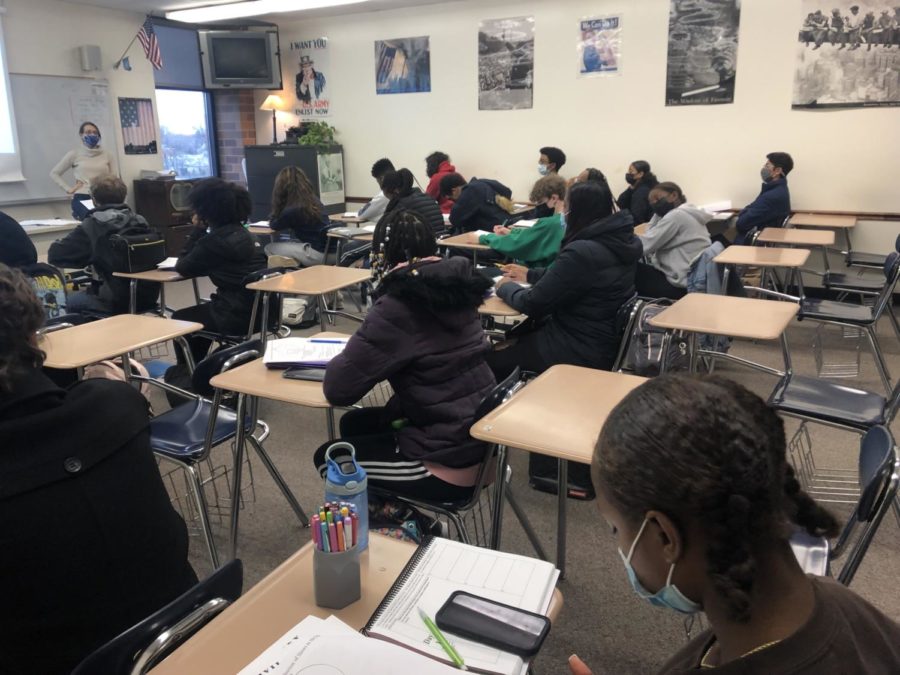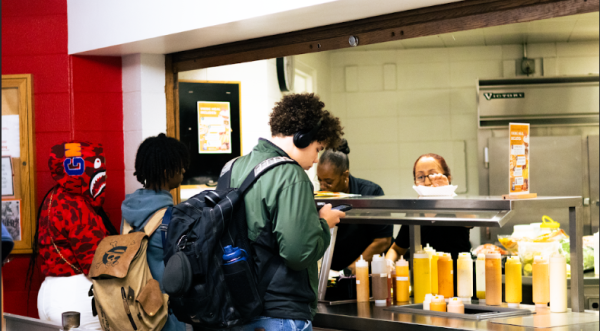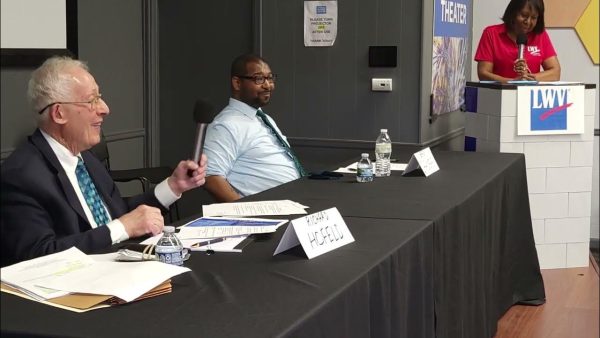Teaching Asian American History Required With New Law
Social science teacher Laura Kelly teaching a U.S. History class
On July 9, Governor J.B. Pritzker signed the Teaching Equitable Asian American History Act,or TEAACH Act, into law, making Illinois the first state in the country to require public schools to teach Asian American history.
The law was passed after a sudden uptick in anti-Asian hate crimes and the Atlanta spa shootings, and it outlines what will be taught during the unit of instruction. It states that schools must teach “events of Asian American history, including the history of Asian Americans in Illinois and the Midwest, as well as the contributions of Asian Americans toward advancing civil rights from the 19th century onward.”
According to the law, “These events shall include the contributions made by individual Asian Americans in government and the arts, humanities and sciences, as well as the contributions of Asian American communities to the economic, cultural, social and political development of the United States.”
The unit will be required beginning in the 2022-23 school year, and H-F is no exception. Director of curriculum Jenifer Hester Schalk said that she and social science department chair Nick Anello have already begun to discuss how it will be implemented at H-F.
“Department chair Mr. Anello and I have read the act and information and we actually already teach many of the things in the Act, many of the requirements, and we will be working throughout our regular curriculum development process to add the things that we don’t,” said Hester.
Social science teacher Laura Kelly said one thing regarding Asian American history H-F is already teaching and has been emphasizing greatly is Japanese Internment.
Kelly said, “The most extensive coverage of Asian American History is currently on Japanese Internment during WWII. This is a very powerful lesson for students as many are not previously familiar with the depth of civil liberty violation experienced by Japanese Americans.”
Anello says that one thing H-F will be adding next year is more local Asian-American history.
“One area that I know that we probably need to beef up a little bit is the Illinois and Midwest experience throughout time. You know, being in the Midwest, being in Illinois, Illinois history tends to play a small role in U.S. history overall, because Illinois doesn’t become a state [until 1818], so that’s an area where we’re going to have to probably improve on,” Anello said.
Kelly adds that she would like to see more education on immigration and activism added to the curriculum next year.
“I would like to expand the coverage I give to Asian American activism during the Civil Rights Movement and look at the experience of different immigrant groups after the Immigration Act of 1965,” said Kelly.
Anello also mentioned which classes the material will be most prevalent in.
“U.S. History, I think, would be one. Government would be another topic as well, because some of the court cases deal specifically with Asian-American history and the Asian-American experience inside of United States history,” he said.
Students can anticipate hearing more about Asian American history throughout the year rather than in a single concentrated unit.
“We will most likely integrate it throughout the curriculum. So, it can still be a unit, but just integrated throughout several units,” Hester explained. “Sometimes it’s really good to teach something concentrated in its own, let’s say, 4-6 week time period, and other times it’s better to actually integrate it throughout so that kids have multiple exposures over time, and that way, oftentimes, it has a greater impact,” said Hester.
Overall, there’s hope that this new legislation will help students understand the Asian-American experience and the importance of diversity and inclusion.
Hester said, “I think, comprehensively, it will give our students that value of humanity, that understanding of the value that diversity brings and really help us with being an equity-centered school and organization.”






